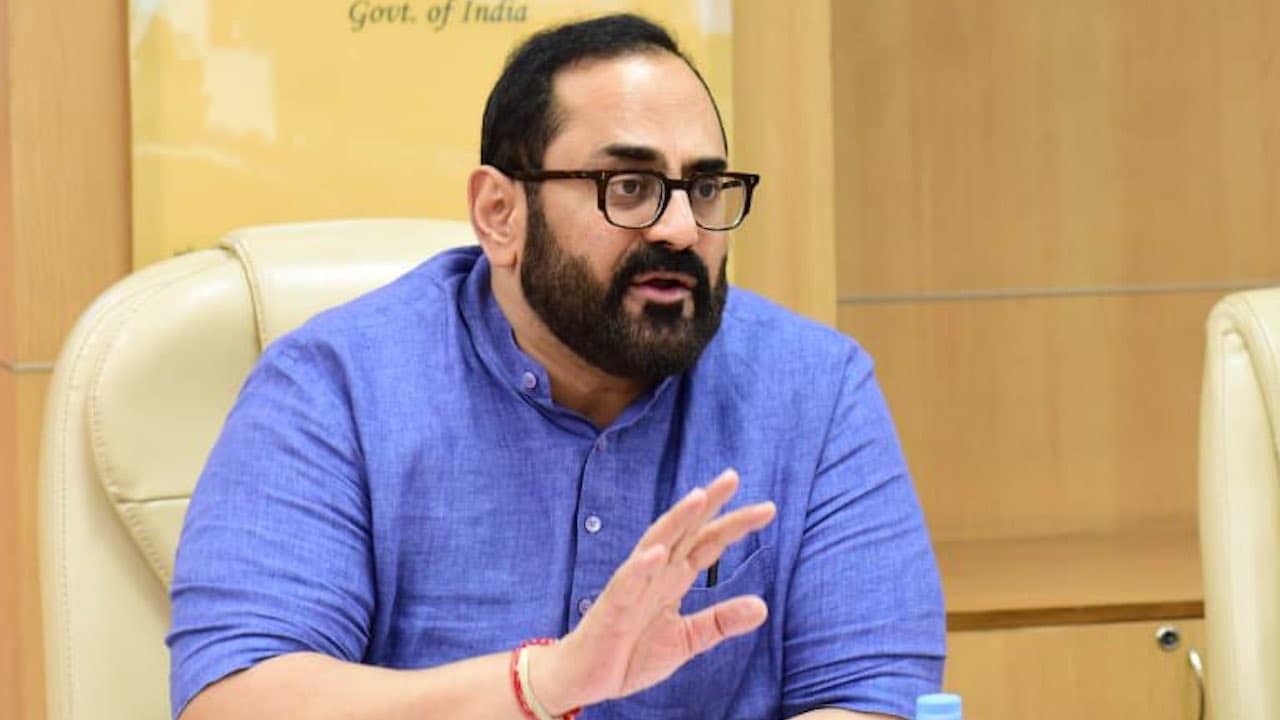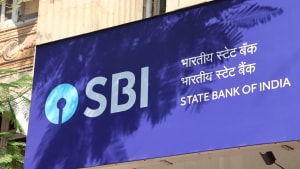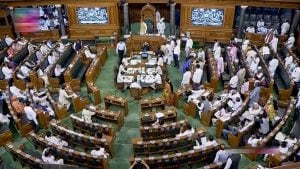Palanivel Thiaga Rajan bats for 28% GST for online gaming based on gross gaming revenue model
Summary
Palanivel Thiaga Rajan, the IT Minister of Tamil Nadu, advocates for a well-defined gross gaming revenue model to determine a 28 percent GST rate for online gaming industry. In an interview with CNBC-TV18, Rajan emphasised that this approach strikes a harmonious balance between regulating the industry, generating revenue, and supporting its continued growth to bolster the economy.
Palanivel Thiaga Rajan, the IT Minister of Tamil Nadu, has advocated a well-defined gross gaming revenue model to determine a 28 percent GST rate for online gaming industry. In an interview with CNBC-TV18, Rajan emphasised that this approach strikes a harmonious balance between regulating the industry, generating revenue, and supporting its continued growth to bolster the economy.
On July 11, the GST Council had decided to impose a 28 percent tax on the turnover of online gaming companies, horse racing, and casinos. However, it appears that there may be a further clarification on the definition of online gaming during the Council’s upcoming meeting on August 2, 2023. The Council is anticipated to introduce a refined description of ‘online money gaming,’ which will take into account games that involve a combination of skill and chance.
Below are the excerpts of the interview.
Q: Did you anticipate this backlash as far as the 28 percent GST on full value for online gaming is concerned. The rate in itself was never in doubt and the industry had accepted that but it was 28 percent on what which is causing the consternation?
A: 28 percent was never the question. The question revolved around 4-5 things. First is, what is the law? Constitutional amendment for GST says that betting and gambling will come under GST. Then the question is what is betting and gambling or is there a distinction between games of skill versus games of chance.
Third issue was when things like lottery tickets are already being taxed at 28 percent on the face value, will it be a contradiction that some games of chance — there are Supreme Court judgements which have called horse racing a game of skill and not of chance or rummy as a game of skill. So there are contradictory judgements all over the place. So if you open up this can of worms that you will now do anything less than the face value, some people were concerned with that and it will put the lottery tickets back on the table.
Last was how do you know what is the gross gaming revenue or what is the actual platform fee or access fee? Is it self-reporting? Can it be done by accounting, can it be done by having separate accounts like a escrow account for betting and a separate account for the fee component? So this was the complexity of it. In places like casinos where people don’t just play one game, they play multiple games, so unless you do a entry-exit kind of check, you really cannot tell what has happened. In fact the industry likes to bundle things in such a way that you cannot tell what are the odds of winning or losing compared to the platform fee. So this was a complexity always.
I don’t think anybody had a problem with the notion that the highest rate of GST should be applied to gambling. So the question is 28 percent GST on what and how do we stay within the amendments of the GST and on the other hand with legal precedent and also not upset the revenue stream that some states are already making from lotteries.
Q: As far as the 28 percent is concerned, as you pointed out, there was no discussion or even debate on whether it should be 28 percent. The decision was that it should be 28 percent. The question was, what should the 28 percent levy be on? The other issue, whether something should be taxed as a game of skill or a game of chance? Again, the council was the clear opinion. And that is the decision that’s been taken forward, that distinction will not be made between game of skill and game of chance. Industry’s point of view and this is the online gaming industry’s point of view and even within the online gaming industry’s point of view, it’s the real money games that are impacted by this decision. They’re saying we’ll be out of business, if it were to be 28 percent on full value, or face value. Now, what do you make of that claim?
A: I think we need to dig a little deeper into this right. I mean, first of all, this question of game of skill or game of chance is not a trivial question, because the GST Amendment says that betting and gambling shall come under GST. It doesn’t say if it’s a question of skill. It’s not clear what it comes under the either the constitutional amendment was not written in congruence with the Supreme Court judgments, or the judgments are not in congruence.
Q: Which is why the amendment will be moved to bring online gaming under it?
A: Correct. In a normal country, you will see that the court judgments follow a precedent, either one precedent holds and everybody sticks to it, or they write a new precedent and it breaks all the other judgments. But in this GoM, that was not the case, every week we were getting some new information about some other judgment, some going back to the 70s, some as recently as 2015 and then some of them were crucial to the case, meaning the case was is it a game of skill or chance. Some were over dicta in the judgment on some other matter that was being adjudicated. And in the process, the Supreme Court said something.
Q: GoM wasn’t dragging its feet, you’re saying that this is just a very complex issue with vested interests involved? Because there are states that are dependent significantly on the revenue that comes in from this.
A: Could it have been done faster? Yes. But with all other things in GST, that’s true, right? When people change in the roles or governments change, the reconstitution of the GoMs doesn’t happen that quickly, the re-nomination of the chairperson didn’t happen quickly. For example, when this GoM was first set, it was not Conrad Sangma, who is either a member or the convener, and then the Gujarat Chief Minister changed and then you we had some changes. So could the GST and GoM function much more efficiently and kind of on a time, time bound scale? Absolutely.
On the other hand, was the great complexity here? Absolutely. I’m not even sure I would call them vested interest, it is a natural interest of let’s say, the minister of Goa that he wants to protect his industry. It is a natural interest of the Minister of West Bengal, that she does not want the notion of 28 percent on face value to be disrupted because the state of West Bengal makes thousands of crores of revenue out of the sale of lottery tickets.
In fact, I’ll go one step more profound than that. At some level, I suggested nobody was a taker, that really, horse racing, online gambling and casino should be separated into three different discussions. I’ll tell you why. Horse racing is a sport where there is a clear tote, and you can see what is coming in and going out and everything is published and taken out. And there is no question of bundling. I mean, there are some multi-level bets, like the Trifecta and all that, but it’s very clear what ticket you bought, and what you took up, casinos are not that clear. But then both horse racing and casinos have one thing in common, there is a locus, you cannot run horse racing, without a physical location. So it is located in one state, and in fact, is regulated by states. So one of the radical suggestions I had, why should horse racing and casinos be under GST at all? Make them like alcohol or petroleum or other things that are only at the state law? Because the legislation is state legislation? It’s not it’s not union government legislation.
Online gaming is a different thing, because it can be done anywhere, anytime across the country, and there’s no distinction of state borders. There’s no locus or even country border. But horse racing and casinos much simpler solution is to say, you regulate it as a state, just like lottery is regulated at the state, you tax it as a state and get on with it, but nobody was that radical. So now we’re left with this question of if you’re going to take it at 28 percent. What should you take it on? And I would say everybody spoke their state’s revenue and interest. And the real question here is not that the industry will die, the real question is, will it move into another world? Will it move underground?
Q: Which is also part of the concern and claim that industry has put forward including to the Prime Minister’s Office.
A: That was always the case. Always the question was, how do you incentivise people to stay in the sunlight, as opposed to go to the underground market where you can’t track what’s happening? And in that sense, as I said earlier to you privately, this notion that came up in Chandigarh, that we will levy 28 percent on online gaming and horse racing and only relocate it for casinos was absurd notion. Because the least substitutable, the least secretly actable sport is a casino, right? You want the music, you want the flash, you want the food, you want the entertainment. So that has the least risk of being substituted. The question is will people pay 28 percent and go to casino? In my view, I’m not sure it’s the death of any industry. But I think it’s like the Laffer curve. You make the system reasonable and a lot of people operate on the system and you get lots of revenue. You make the system unreasonable and much of it goes into the untraceable market.
Q: So do you think what is being proposed now is unreasonable?
A: I have proposed multiple solutions. The most radical solution of leave this to the states except for online gaming, found no takers. I suggested two other ways. I said nobody goes to bet expecting to lose. It’s human nature, I’m going to bet expecting to win. The real question is if I’m going to pay Rs 128 instead of 1 and win Rs 2, then it’s a completely different bet than if I pay Rs 1 and pay Rs 2.
Let’s say you’re able to say that 28 percent is the platform fee, and you only pay 28 percent GST on the total then you’re placing a Rs 1.56 paise bet on a Rs 2 bet. So there is a profoundly different odds in the minds of the punter. So all I said was for things like lottery, there’s no question of whether GST changes behavior or not, because they’re not expecting to win 10:1, they are not expecting to win 100:1, they are expecting to buy Rs 1 ticket and win one lakh. He doesn’t care whether he paid Rs 1 or Rs 1.28 paise to win Rs 1 lakh.
But if you go to games of odds of 1:3, 2:5, those kinds of odds, it makes a big difference, because 28 percent skews the odds. So there are multiple ways to deal with that. And one of them I said, was to basically say that if your winnings are less than x ratio, you will get the refund of the GST, as long as you keep proper electronic track. And if it’s more than 10x, let’s say, you don’t get the rebate, that would actually maximise revenues incentivise betters, and not really be a drain of any real loss on GST, because you’re only giving him back GST on Rs 1 right? And you can income tax, the Rs 5 or 10 gain because it is all computerised now, and those should be taxed as winnings in income.
If you can’t do that, and that was considered too complicated and we don’t want to get into that. Then, with the help of the committee that we had set up in Tamil Nadu, I requested the senior Supreme Court lawyer, and he heads a committee for us when I was finance minister called the Committee on Federal Fiscal Relations and they are specialists. So they suggested something which I also proposed, they said, at the point of revenue booking, book the revenue into two different streams. One stream is whatever you consider to be your gross gaming revenue, your platform fee, access fee, whatever you want to call it, only that will be subject to GST, the rest you put in an escrow account for only winnings. And that money will be only subject to TDS and reporting for taxation. This way, you keep clean accounts, and now you’re no longer applying 28 percent on the full value. You’re applying 28 percent on whatever the system says is the platform fee, the access fee, the gross gaming revenue, but what that requires is for the industry to agree that they will run separate accounts. And therefore they cannot do this bundling and mixing of the odds they’ll have to reveal truly if you pay 100, how much of it is going into access fee and how much is really bet money.
Q: These were the proposals that you had sent to the GoM. And of course now we know that the decision of GST Council which according to the revenue secretary is not a decision at all, it’s a reiteration of what the law is. The revenue secretary in his conversation with me says that there is no question of retrospectivity because this 28 percent on full value is the situation as of today. And in fact, they believe that the judgment of the Karnataka High Court will be challenged now by the revenue department to say this is established law and this is the rate on full value. So given that, what do you expect this meeting of the GST Council on the second of August to arrive at and this is also unusual because it’s a meeting of the GST Council after decision has ostensibly been taken to operationalise a decision which hasn’t happened previously?
A: It’s no secret that I’ve been less than a great fan of the way the GST Council operates, I have a lot of profound issues, in the first meeting I attended. I listed them because that was the first time a DMK minister had been a member, it was like three years into the life of the council. But in practice these other nuances that really bother me.
If it is reiteration of the law, why did we need the GoM? If the first GoM report was acceptable, why was it sent back? Now, the second GoM report has arrived at the same conclusion that according to the government is the law. Now they have one more meeting just for the sake of implementation.
At some level, I’m okay that the GST Council meets but at some other level, what is the basis for the meeting? How the agenda gets set? For example, in December 2021, we had an emergency meeting, with like 24 or 48 hours’ notice, again unprecedented for a single point issue of deciding to put on hold the GST Council’s decision to raise the rate on some kinds of textiles.
Then what is the point of having a council? What is the point of making the decision? So a lot of these things are very haphazard, they’re not run with enough fore planning and thought. And then political pressure comes one way, you do something, it comes another way, you do another thing.
I realise that it’s in its infancy, it’s a 75 year old country, council has been around for five years. It’s not like it’s got a long track record, so there’ll be teething troubles. But there are some profound issues that need to be addressed, in my opinion about how the agenda gets set, how the topics are decided, how the decisions are kind of ratified without having to look back, for example, compensation.
Everybody asked for compensation. And there was kind of discussion about it, there was no decision. Now the question is, who should decide whether compensation should continue or not? If it is with the council, it should have been brought to the council as agenda item and put to vote. If it is not the council, how is it federalism and how is this the prime kind of platform of Union state relations, if the compensation issue is not decided by the council, but de facto decided by somebody else? Going back to the same terminology, the constitutional amendment called for five years, five years are up, discussion closed. That’s it, there was no actual process further. So these are the issues that over time will have to be worked out for the council to be really an effective kind of body.
Q: You do believe that claims of the industry’s demise are somewhat exaggerated, you believe what we could possibly see happening is the industry moving into dark mode. And that, once again, has been one of the concerns left on the table. But what do you believe could be the best way forward? And how hard will it be to execute what has already been decided?
A: To execute what has been decided is blunt force. Do you have good enough firewalls and blockers and sites from operating because it is a technology issue for online gaming, for horse racing and casinos its much easier, you can go physically inspect and make sure. So is it implementable? The answer is at least for horse racing and casinos, it’s implementable. For online gaming it’s a technology question, I assume that with the right kind of focus, you can get the right kind of solutions. Different countries ban, WhatsApp calling, they’re able to get away with that and that’s a much more ubiquitous kind of application.
The more profound question is, is this the best outcome for the industry and the revenues of the states or governments together. And is it protective, or somehow value adding to the people? That to me, still remains open. To my mind, the demise was always the extreme case. I don’t see things demise just because the tax rate is high.
But we have 100 examples all over the world, like when we tax alcohol high, we expect some of it will be that people stop drinking because they can’t afford to pay the tax, when you tax tobacco high, we expect people to stop smoking because they can’t afford to pay the tax. So there’s enough precedent that you should expect that at least it will have a retardant effect on the rate of growth of the industry, because of the tax.
And at worst, it could drive a lot of this activity into illegal corners of the market or the world that nobody benefits from because then what you worry about is second order effects. The loss of revenue etc are primary effects. The second order effect is once you see criminal activity, meaning by definition, illegal activities, criminal activity, then criminal activity with large amounts of money involved will lead to all kinds of other complications and law and order problems and so forth. So that’s the real risk of having a high tax rate.
Eventually, like all the rest of the world, I think the best case solution will be to find a way to get at a common agreement of what is the platform fee or the access fee or the gross gaming revenue, tax that indirectly, tax that with the equivalent of sales tax and tax the winnings with income tax as direct tax. That’s what most countries in the world do, so that I think would have been the right answer, but it requires a level of technology and requires a level of implementation that maybe some people feel is not realistic. I can’t tell.
But based on my global experience, I would say if other people have done it, we should be able to do it. Also the industry needs to cooperate, they have to say what is the percentage and they have to show like by having separate accounts that they are actually adhering to that percentage because if the percentage is wrong in two years or five years or six months, you’ll find that money is accruing in the pot in the in the escrow pot without being distributed. If they do the division the other way wrong, you’ll find that they’re not able to pay winnings. So over time, there’ll be accumulation that tells you what’s right and what’s wrong.
Q: So you’re saying essentially, the best way would be for revenue to actually tax 28 percent at gross gaming. But you’re also saying that industry needs to come clean on what constitutes gross gaming revenue and arrive at a uniform definition of what constitutes gross gaming revenue and that is what at least as far as online, real money games are concerned that 28 percent should be levied on gross gaming revenues.
A: I think that would work really well for online and it would work really well for horse racing. Whether that would work well for casinos or not, I’m not sure because the member from Goa had all these scenarios where he was talking about people moving tables, winning, losing, but I still say that as long as you tax them on the day they come in — let’s say they come play for eight hours, 50 games doesn’t matter. What they came in with and what they go out with is what you should really kind of track. If you start at inception with parallel accounts, you got a solution in my mind, but maybe that’s not implementable in the casinos. I don’t know.

Elon Musk forms several ‘X Holdings’ companies to fund potential Twitter buyout
3 Mins Read
Thursday’s filing dispelled some doubts, though Musk still has work to do. He and his advisers will spend the coming days vetting potential investors for the equity portion of his offer, according to people familiar with the matter









 Listen to the Article
Listen to the Article  Daily Newsletter
Daily Newsletter

















